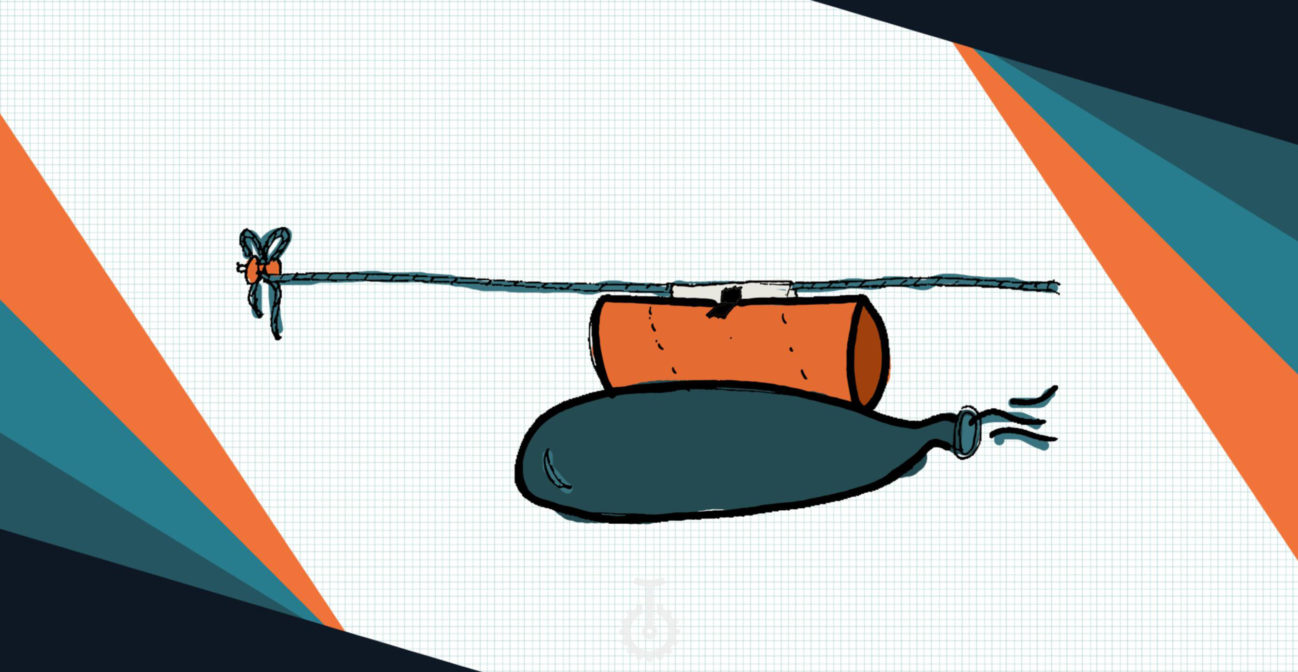Join us for conversations that inspire, recognize, and encourage innovation and best practices in the education profession.
Available on Apple Podcasts, Spotify, Google Podcasts, and more.

Related Materials include:
Objective: Students will construct a zip-line to recognize and analyze the motion (and cause of motion) of an object. Students will begin to be able to evaluate the causes of motion and deduce the important factors in measuring motion (time and distance)
Learning Goal: Motion is achieved when a unbalanced forces are applied. The amount of mass and force affect motion of an object. Distances and time are necessary to calculate speed.
Vocabulary: motion, force, gravity, acceleration, balanced forces, unbalanced forces, speed, distance, time, reference point
Engage:
Explore:
Students are given the prompt that they all are working for a large transportation engineering firm that has been contracted by the city of Los Angeles to create a public transit system to travel directly from our location and to the beach.
Explain:
Elaborate:
Evaluate:
Additional Resources:
Objective: Students will design and construct a self-propelled car to examine how forces are used to move objects.
Learning Goal: Students will investigate alternative ways to propel cars. What is the source of motion and the basic engineering cycle.
Vocabulary: friction, chassis, force
Introduce students to automotive engineering: “Automotive engineering is a billion dollar industry that directly impacts the lives of almost everyone living in Los Angeles. For the next several weeks we will be following the engineering design cycle to build cars and test them.
Engage:
“The city of Los Angeles has decided that the zip-line design may be too expensive to implement city wide and has hired our engineering firm to design and build several transit cars in place of the zip-line. The first step in designing and building a car is designing”
Explore:
Explain:
Elaborate:
Evaluate:
Objective: Students will create and edit/revise their cars to calculate the speed of their cars and compare/contrast the speeds of different cars in order to evaluate best practices for speed. Students will be able to produce a D vs. T graph from their data.
Learning Goal: Motion energy is kinetic energy. Measuring motion: Speed= distance/time. Average speed= total D/total T, Graphing speed Vocabulary:
Engage:
Explore:
Explain:
Elaborate:
Evaluate:
Objective: Students will be able to analyze/evaluate the effect of changing the mass of the car on the car’s speed and acceleration
Learning Goal: Newton’s 2nd Law of Motion: Changing the mass of car affects the speed and acceleration. The greater the mass of the object the greater the force needed to achieve the same motion.
Engage:
Explore:
Explain:
Elaborate:
Evaluate:
Objective: Students will be able to analyze/evaluate the effect of changing the amount of force (exerted on the car) on the car’s speed and acceleration.
Learning Goal: Newton’s 2nd Law of Motion: Changing the force on the car affects the speed and acceleration. The greater the mass of the object the greater the force needed to achieve the same motion.
Engage:
Explore:
Explain:
Elaborate:
1. Students compare their results to see if the pattern is consistent, as force increases is there an increase in acceleration.
Evaluate:
Additional Resources:
Objective: Students will be able to show how potential energy changes with the height of an incline and illustrate how the potential energy changes into other forms of energy.
Learning Goal: Objects may also contain potential energy depending on relative positions. Potential energy increases as height of ramp increases. When two objects interact energy can be transferred from one object to another.
Vocabulary: potential energy, incline/decline plane, transfer, kinetic energy, gravity
Engage:
Explore:
Explain:
Elaborate:
Evaluate:
Objective: Students will be able to analyze all the forces acting on a car traveling up an incline and will design/construct a car that is able to move up and over an incline
Learning Goal: When two object interact energy can be transferred from one object to another. Amount of force needed to propel car must be greater than forces acting in opposite direction.
Engage:
Explore:
Explain:
Elaborate:
Evaluate:
Additional Resources:
PhET Simulation of Kinetic/Potential energy http://phet.colorado.edu/en/simulation/energy-skate-park
PhET Simulation of forces on an incline http://phet.colorado.edu/en/simulation/the-ramp http://phet.colorado.edu/en/simulation/ramp-forces-and-motion
Objective: Students will be able plan an investigation to predict how several forces will impact the motion of an object and design a solution to increase the safety of their vehicle.
Learning Goal: The motion of objects is determined by the sum of forces acting on the object. Mass and Force affect motion of two interacting objects. When two objects interact each one exerts a force on the other.
Vocabulary: net force, vector
Engage:
Explore:
Explain:
Elaborate:
Evaluate:
Additional Resources:
PhET online simulation of collisions with masses http://phet.colorado.edu/en/simulation/collision-lab
Objective: Students will design/construct a car that is able to complete the designed track(or course)that includes one large hill and a subsequent smaller hill to evaluate the effectiveness of their car (including speed, forces acting on car, etc.)
Learning Goal: Relationship between force, energy, and motion. Vocabulary:
Engage:
Explore:
Explain:
Elaborate:
Evaluate: